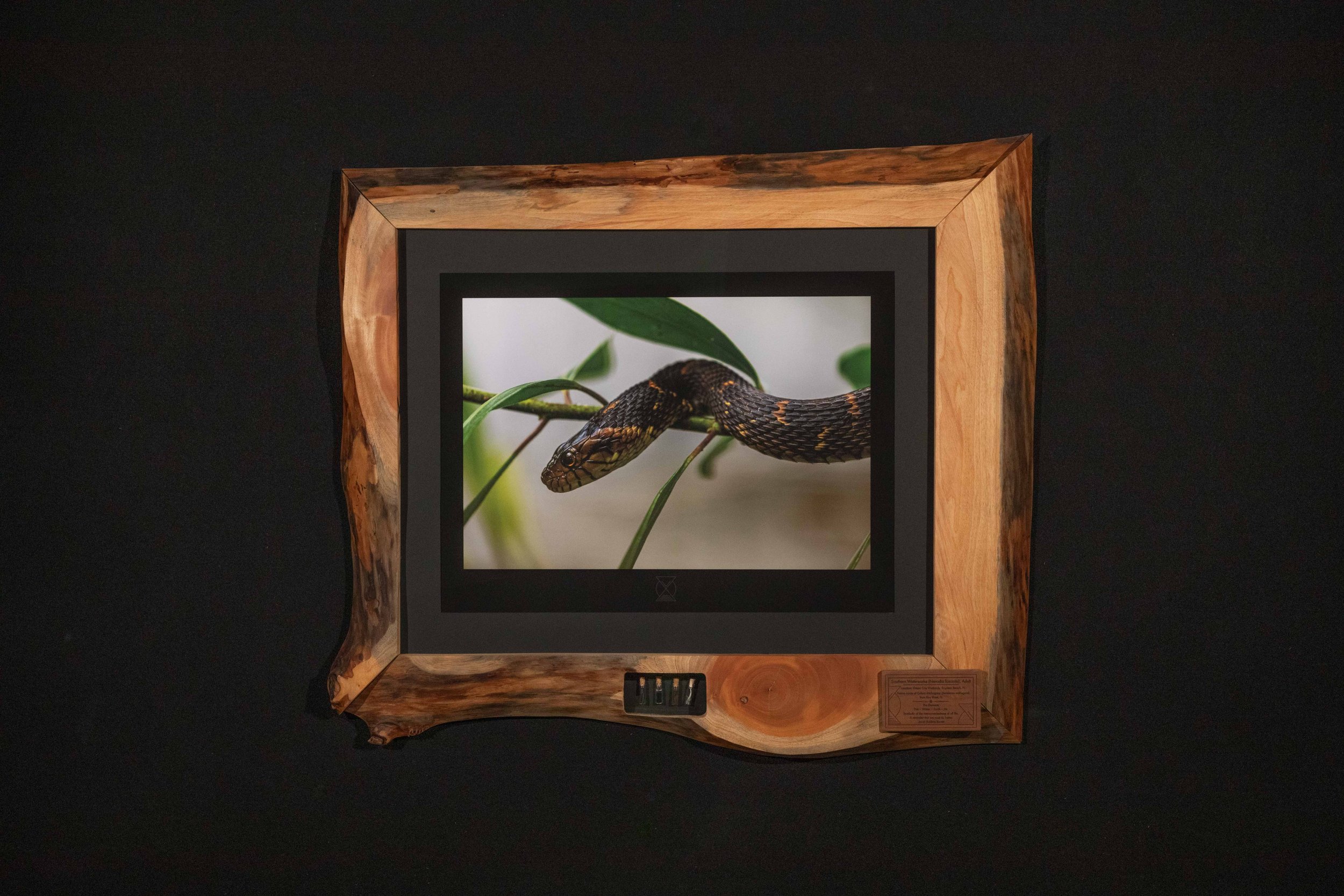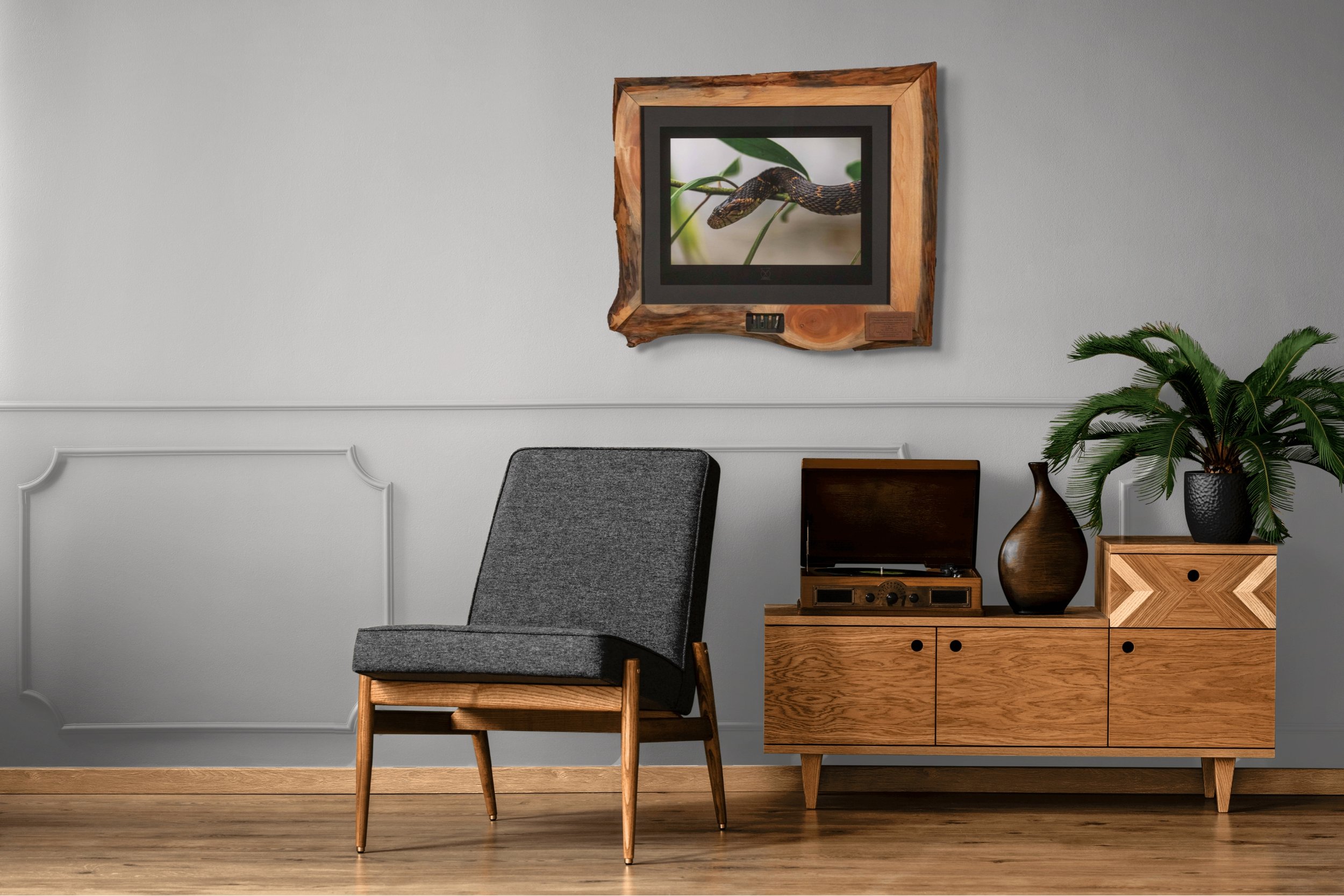Southern Watersnake - Green Cay Wetlands, Delray Beach, FL




Southern Watersnake - Green Cay Wetlands, Delray Beach, FL
Southern Watersnake (Nerodia fasciate), Adult
A rather small snake in real life, this fellow hung out very close to the boardwalk that goes through Green Cay, allowing me to get this close-up photo of the beautiful snake. This photo was taken 3/6/22 at 5:17 pm.
WeForest Donation: $320 (What is this?)
Print Number: 2/3
Print Size: 15 x 22.5
Total Dimensions: 35 x 39
Hanging equipment and certificate of authenticity included.
photograph
Southern Watersnake (Nerodia fasciata)
No I am not venomous. That is always the first question when it comes to snakes right? The Southern Watersnake is indeed non-venomous and are very shy snakes. It’s a good thing too as they are extremely prevalent throughout Florida and the surrounding states. Although nice to us they do have some prey that wouldn’t agree. As their name might suggest they are always found near water and that is due to their diet which almost entirely consists of frogs and fish. Furthermore it does the majority of its hunting at night, not the most common attribute. They are also not constrictors and thus they simply bite and then swallow their food whole and alive.
location
Green Cay Wetlands
The Green Cay Wetlands were created in 2004, converted from farmland in Boynton Beach. The park is a water reclamation center, similar to the Wakodahatchee Wetlands, naturally filtering millions of gallons of waste water each day.
A raised boardwalk through the property allows visitors to be as close or closer to the wildlife as one would be in a zoo, yet here they are free, in their natural landscape, exhibiting their behaviors.
Although not too far away from Wakodahatchee there was quite a bit of difference in the species that I found to be prevalent in each location. This shows just how small differences in ecosystems can have a large impacts on the species that inhabit them. Taken into a different context this is a very apt example for how great an effect climate change can have on ecosystems that are changing rapidly.
frame
Cuban Mahogany (Swietenia mahagoni)
Cuban Mahogany is one of three species of Mahogany and it was originally the most widely used of the three. Nowadays, Honduran Mahogany is the much more prevalent wood and what most people would recognize as Mahogany. Native to the Carribbean, Cuban Mahogany’s northernmost range does include the far south of Florida, including the Keys. I happen to get all of my Cuban mahogany from a salvager in the Keys who removes the trees from construction sites before cutting it into slabs and drying it.
the elements
Fire, Water, Earth, and Air
In the display case in the bottom of the frame, four items are preserved glass vials. The items represent the elements: fire (wood charcoal), water (mineral oil), earth (soil), and air (a milkweed seed). I include these items in my work as a symbol of the interconnectedness of all life on earth, and as a reminder that humans must do better.
The Plaque
I engrave a wooden information plaque for each work. The plaque includes what the photograph is of, the location of the photograph, what type of wood the frame is made of and where I got the wood from. The plaques also explain what the vials are in each display case, and even state the meaning of my logo. The plaques are attached magnetically and can be removed to read or to store on the back of each frame if you prefer not to have it displayed on the front.

